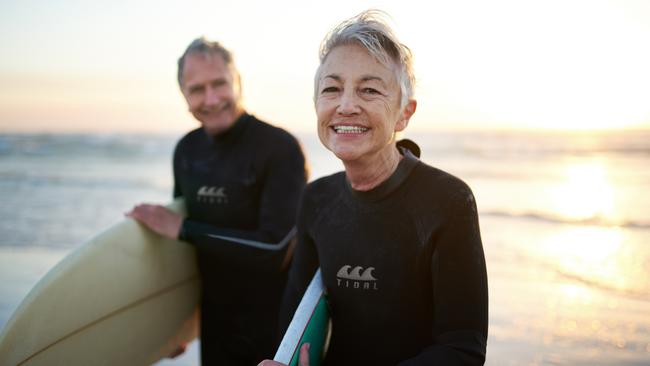Key questions for the self-funded investor seeking a pension
You may be surprised to hear that you qualify for the pension – or at least a part pension. Here’s what you need to know.

Are a self-funded retirement and the age pension mutually exclusive? Not necessarily.
Claiming – and maintaining – those pension payments is not a cut-and-dried subject.
While age and residency criteria also apply, to qualify for the age pension, you must meet an income or assets tests. If you exceed the upper thresholds, you won’t receive even a part pension. You may have few assets, but a high income or alternatively you may have assets, but a low income.
Either way, many people don’t realise they may still be eligible for a part-pension. Also, your circumstances change and markets fluctuate. You may drift into eligibility one year or out of it depending on the year in question. Knowing your entitlements and what will work best for you requires strategic planning.
Why does claiming a pension or part-pension matter?
The pension offers recipients two major benefits – supplementing retirement income to preserve superannuation/assets, and access to healthcare benefits.
Even a small pension opens access to healthcare cards, reducing your medical expenses. There are two types of healthcare cards – the Commonwealth Seniors Health Card and the Pensioner Concession Card. Each has differing value and is valid for one or two years, respectively.
How does pension eligibility apply for couples?
Often, one partner is younger than the other – typically women are younger. Yet the bulk of superannuation is in the man’s account (thanks to the culture of older generations where men did most of the paid work, and the issue of gender pay gap, etc). If one partner is below pension age when the other retires, the younger partner’s superannuation is not counted under the assets and income tests, because it is still in the accumulation phase. This could be leveraged to your advantage – using super splitting contributions rules to redirect money into the younger partner’s super, hence reducing assessable income and assets. Doing so may allow the older partner to qualify for a pension, even if only until the other reaches age pension age.
This should be well-planned, as there are caps on how much can be contributed and when, and tax implications. Employment income also affects both partners – one’s earnings can affect the other’s pension entitlements.
Overall, a higher income may offset the lack of a pension, but the trade-off could be additional commuting costs, income tax, time apart and stress. As a result, it’s crucial to do your numbers jointly, rather than as individuals.
What are the trade-offs?
While a pension may seem like free money from the government, there are strings attached. Control over your finances is a big consideration. Pensions obviously have very strict rules. Whether you claim it – and how much you receive – has flow-on implications for your tax, super and investment structures. Certain financial products are discounted for pensioners and can be beneficial in generating income, but there could be liquidity issues for extended periods. A lack of flexibility could restrict your future ability to claim the pension, or assume you will continue receiving pension payments when your eligibility may lapse down the track.
And at a more basic level, do you even want Centrelink in your life? Some people prefer to avoid the hassle and believe forgoing the pension is a worthwhile investment.
What should I weigh up?
If a part or full pension is something you want to incorporate into your retirement plan, explore ways to maximise those funds and your eligibility to access them.
Right-size asset values: Contents and cars are often overvalued by their owners. Generally, they are depreciating assets (save, perhaps, antiques). Make sure they are updated.
Selected years: As we saw when Covid-19 hit, markets fell. That opened up opportunities for some people to qualify for a part-pension that year.
Home ownership: If you are a non-homeowner, you have a higher assets test. This may only be temporary if you are downsizing and haven’t yet found your forever home. Also, primary residences are exempt from the assets test – investing in improvements may reduce your assessable cash, while maximising your eventual sale price.
Who owns what: It could make sense to put low-earning assets into the name of the partner claiming the pension, and higher-growth assets into the other partner’s name if they are still accruing super.
Funeral bonds: There is potential here to reduce your assessable assets by prepaying funeral costs.
Inheritances: Gifting money/assets to kids and grandkids may boost your pension eligibility, if done properly. However, this needs to be done well before you reach pension age. There are limits on how much can be gifted. Plus, being overgenerous is usually counter-productive – it may not improve your Centrelink situation anyway, and you’re left with less to fall back on in future.
Future needs: Your healthcare needs, living costs and financial situation will change over time. What works now may not be the same in 10, 20, 30+ years’ time.
Ultimately, the age pension is not the be all and end all. Some people will benefit from it. Some are ineligible for it altogether.
Seek professional advice to help weigh up your options and determine whether the pension could work favourably as part of your self-funded retirement.
Helen Baker is a licensed financial adviser and author of On Your Own Two Feet: The Essential Guide to Financial Independence for all Women.





